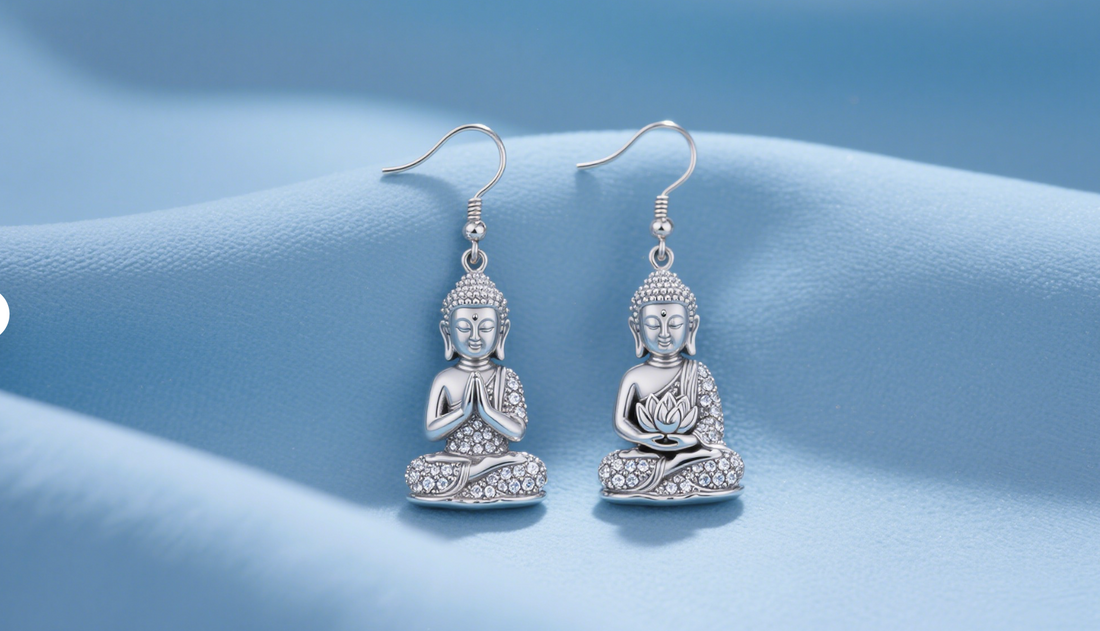
Buddha Jewelry: Bridging Tradition and Modern Fashion Trends
Share
The Symbolism and Meaning of Buddha Jewelry
In a world where spirituality meets aesthetics, Buddha jewelry has emerged as a timeless symbol of inner peace and cultural heritage. This article explores how these sacred adornments transcend mere accessories, offering wearers a tangible connection to ancient wisdom while adapting to contemporary style.
Table of Contents
- Understanding the History and Significance
- Analysis of Current Fashion Trends
- Material Choices: From Metals to Gemstones
- Elevating Personal Style through Coordination
- Cultural Symbols and Spiritual Meanings
- Feng Shui Considerations for Wearing
- Maintenance and Preservation Techniques
- Practical Buying Guide
- Cultivating Inner Peace through Adornment
1. Understanding the History and Significance

Buddha jewelry traces its origins to 2nd-century Buddhist art, initially serving as devotional objects in temple rituals. The practice of wearing miniature Buddha figures became widespread during the Tang Dynasty (618-907 AD), symbolizing protection and spiritual alignment. Traditional designs often incorporate mudras (sacred hand gestures) and auspicious symbols like lotus flowers, representing purity and enlightenment.
2. Analysis of Current Fashion Trends
Modern interpretations blend minimalist aesthetics with traditional motifs. Stackable Buddha charm bracelets and layered necklaces with subtle spiritual symbols dominate 2025 collections. Designers are experimenting with mixed-material compositions, combining sterling silver with semi-precious stones like moonstone or lapis lazuli for contemporary appeal.
3. Material Choices: From Metals to Gemstones
Traditional Options
- Jade: Revered in Asian cultures for its protective qualities
- Sandalo Wood: Used in prayer beads for its calming aroma
- Brass/Bronze: Favored for ritual objects due to durability
Modern Variations
- Oxidized silver with diamond-cut details
- Rose gold-plated pendants
- Ethical resin composites mimicking antique textures
4. Elevating Personal Style through Coordination
For subtle spirituality: Pair a small Buddha pendant with delicate chain necklaces. Bold statements call for chunky malachite beads with metallic accents. Maintain balance by limiting spiritual pieces to 2-3 items per outfit. Earth tones and natural fabrics enhance the organic essence of spiritual jewelry.
5. Cultural Symbols and Spiritual Meanings
The Laughing Buddha symbolizes abundance and contentment, while meditative Buddha figures represent inner stillness. Lotus motifs signify spiritual awakening, and Dharma wheels denote the path to enlightenment. Understanding these symbols helps select pieces aligned with personal intentions.
6. Feng Shui Considerations for Wearing
- Position neck pendants above the heart chakra
- Avoid wearing to sleep or in bathrooms
- Cleanse new pieces with moonlight or sage smoke
- Rotate jewelry based on lunar cycles for energy renewal
7. Maintenance and Preservation Techniques
Store separately in anti-tarnish pouches. Clean metal surfaces with microfiber cloths; gemstones require pH-neutral solutions. Annual professional inspections prevent stone loosening. For wooden beads, apply essential oils seasonally to prevent cracking.
8. Practical Buying Guide
Verify craftsmanship through:
1. Symmetrical facial features in Buddha carvings
2. Secure clasp mechanisms
3. Hallmarks for metal purity
4. Natural stone variations (avoid perfect uniformity)
5. Ethical sourcing certifications
9. Cultivating Inner Peace through Adornment
Use jewelry as meditation anchors by focusing on texture during mindful breathing. Select pieces with personal symbolic resonance to reinforce spiritual intentions. Regular cleansing rituals maintain energetic clarity.
Conclusion
Buddha jewelry serves as more than decoration – it's a bridge between earthly beauty and spiritual aspiration. By understanding its cultural roots and modern applications, wearers can select meaningful pieces that enhance both personal style and inner harmony. As spiritual awareness grows globally, these sacred adornments continue to evolve while maintaining their timeless essence.
FAQ
-
Can I wear Buddha jewelry if I'm not Buddhist?
Yes, these pieces are widely appreciated as cultural art and spiritual symbols beyond religious boundaries. -
How often should I cleanse my spiritual jewelry?
Monthly cleansing is recommended, or after exposure to negative environments. -
Are there metals to avoid in spiritual jewelry?
Some traditions discourage aluminum and lead-based alloys for their low vibrational quality. -
Can I wear multiple Buddha pieces together?
Limit to one prominent piece per body area to maintain energetic focus. -
How to authenticate jade Buddha carvings?
Look for natural veining, temperature retention, and certified gemological reports.
